
| |


|
|
|
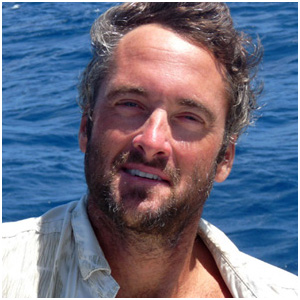 |
Day 3,619 - Kakadu, Northern Territory
18:07hrs - April 27, 2017
A Bonza Country |

Australia is a great country and, all technicalities aside, it's the world's biggest island (all 3 million sq miles of it), and over the last four weeks of trundling north up through Western Australia, the country's biggest state (976,790 sq miles), along the world's longest highway (9,000 miles) we've sought out, happily stumbled across, and in a few cases taken great measures to avoid some of Australia's, and the world's, most impressive collection of natural and man made wonders.
In Coral Bay, off the Ningaloo Reef, we had the rare privilege and treat of swimming with the world's biggest fish (whale sharks). We've driven alongside a freight train that, with its cargo of iron ore, stretched to opposite horizons (the longest having heaved a world-record 682 carriages, a staggering 4.5 miles of Australian minerals across the Outback). We've explored ancient forests of calcified pinnacles that no one can really say for sure how they were formed. And we've white-knuckled it on the Great Northern Highway as the world's longest road trains barrelled past in cyclonic bursts of wind, red dust and stone chips before unloading their cargo at the world's largest bulk export port and into the world's largest cargo vessels.
From the world's tallest termite hills, the world's most impressive dinosaur foot print (unearthed just last month), the world's heaviest gold nugget (173 lbs), to ancient boab trees all creased and weathered from over a thousand years of living in the Outback, to the remote and mesmerizing Bungle Bungles, the Great Barrier Reef and everything in between, Australia is, without doubt, one of the most impressive countries we've visited so far.
We rolled into the Northern Territory late last night, our sixth state/territory since we left Sydney, and discovered that it's home to some of the world's largest saltwater crocodiles (swimming in creeks, estuaries and billabongs is strongly discouraged here). It's also where for the next few days we'll explore Kakadu National Park, Australia's largest terrestrial park, and where we hope to find 20,000 year old Aboriginal rock art and cave paintings created by the world's oldest living culture.
The NT is also where you can find the world's second largest monolith, Uluru (Ayres Rock) which is surpassed only by Mount Augustus (which, of course, can also be found in Australia). So next week, before returning to Sydney and Dream Time to sail up to the world's largest sandy island (Fraser Island), and to explore the largest living structure on Earth (The Great Barrier Reef), we've decided to take a slight detour into the heart of Australia to visit Uluru, and to pay our respects at this sacred Aboriginal site at the red centre of this great country.
But first we must head north to the Top End, Moby's final port of call, and into a city that, until quite recently, was responsible for distributing the world's largest mass-produced bottle of beer, the 'Darwin Stubby' - a dizzying 2.25 litters in a single serving. And if I'm fortunate enough to find one untapped, it shall be employed to toast this remarkable country.
Cheers Australia! |
|

| |
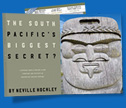
Hot off the press!
Read Dream Time's May story in Cruising World >

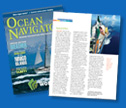 Sneak Peek! Sneak Peek!
Read Dream Time's May/June article in Ocean Navigator >
|
|
|
| April 27, day 65 of our 80-day walkabout around Australia. |


| April 25, 2017 | Still cruising north on 'Highway 1', the world's longest highway, 9,000 miles of tarmac. Stopped to stretch and take a photo of this handsome fella. |
|

| April 23, 2017 | Western Australia, Purnululu National Park - The breathtaking and bizarre Bungle Bungles from 2,300 feet. |
|

| April 23, 2017 | From river bed to mountain range in 350 million years. The ancient towering sandstone domes were, remarkably, only discovered by tourism in 1983. |
|

| April 23, 2017 | Purnululu National Park - Catherine standing inside the natural amphitheater of Cathedral Gorge. |
|

| April 19, 2017 | Hug break - Catherine bonding with a 600 year old Boab on the long road to the Bungle Bungles. |
|

| April 19, 2017 | Derby, Western Australia - These beautiful dancing Boab trees, which can live for over 1,500 years, growing wild in the Kimberley. |
|

| April 16, 2017 | Kirijini, Western Australia - Bush breakfast. |
|

|
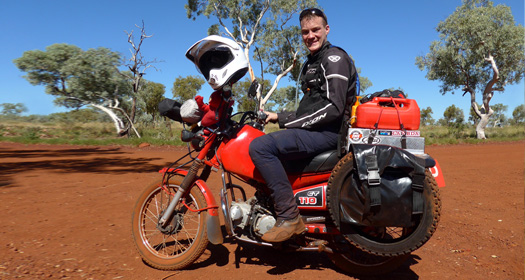
|
April 16, 2017 (day 3,608)
Quick Fix: Kirijini, Western Australia

Off Road
After visiting the Kalbarri National Park and sculling a tinny upstream, we steered Moby, yes, we've named our campervan Moby, away from the coastal road and into the Kirijini, a rugged red dusty region of giant termite hills, swaying spinifex grass and a stunning network of gorges carved deep through countless layers of rich iron ore rock. We also met Liam, an adventurous Aussie who, just last week, set off from Perth to ride his tiny Honda CT110 'postie' motorbike from Australia all the to the UK via Asia, India, Nepal, Pakistan, Iran, Turkey and Europe! If he makes it that far he'll return to Australia via the Americas. Almost every other vehicle out here is of the robust 4x4 variety, in fact we haven't sighted another van like Moby for days, and with our TomTom GPS pleading with us to return to paved road, it feels a little like we're boldly going where no 2WD van has gone before. |
|

|
 |

|

| April 12, 2017 | Coral Bay, Western Australia - This juvenile whale shark was only thirty feet long. |
|
| |


Thank you SeaLife Differently for these incredible photos! |
|
|
 |
Day 3,604 - Coral Bay, Western Australia
23:02hrs - April 12, 2017
A Big Fish! |

The whale shark is certainly not a whale, nor is it really much of a shark, at least not the eager predatory kind often imagined with row upon row of serrated teeth. It's not particularly fast either, and swaggers around the ocean at much the same casual pace of a sea turtle. And as it never has to surface for air, and regularly swims to depths of over 3,000 feet, its breeding habits and migrational patterns remain mostly a wonderful mystery. But one fact is indisputable, and that is that the whale shark is an absolute giant, the world's largest fish to be exact, and today we had the rare privilege and pleasure of swimming with one in the Indian Ocean.
There are only specific times of the year and a handful of regions in the world where these gentle giants, that grow over forty feet in length, can be sighted with regularity. It's about one week after a full moon during coral spawning when aquatic life gathers in vast numbers to feed up the food chain, and as fate would have it our exploration along Australia's remote western coastline just happened to coincide with this rare phenomenon.
Even with nature in your favour, simply sighting a whale shark is a challenging enough endeavour. After-all, the Ningaloo Reef, a World Heritage Site and where these fish gather each year between April and July, covers a vast area over 2,000 square nautical miles of shimmering sea. And swimming with a whale shark, well, that's significantly harder, and requires a coordinated team effort.
We teamed up with Coral Bay Eco Tours, one of only three vessels in the area that is licensed, experienced and equipped to research and view these magnificent fish. But with over twenty years experience recording the whale shark's habits, even they require a little help locating these allusive creatures, relying on a spotter plane to circle this corner of the Indian Ocean in the hope of narrowing the search.
While waiting for the plane to radio coordinates we wet our gear and snorkeled the Ningaloo with turtles, grey sharks, white tips, friendly reef fish and hundreds of pulsating blooms of red jellyfish which, according to Heather, our energetic dive guide, administer only a mild inconvenient sting. But outside the reef on the drop-off, where the seabed fell away under our fins to a deep rich world of blue sapphire and light fractures, whilst floating gently on the backs of giant rolling ocean swell, we saw keesingia gigas lurking, lethal white gelatine slabs suspended at a variety of inconvenient depths that if touched, and not fatal, promise to have you writhing around in unimaginable pain for the entire day.
After a few hours of cautious snorkeling and free-diving the VHF radio finally crackled into life to deliver the much awaited news - a whale shark sighting five miles offshore. The Kai Aura, our forty-six foot dive vessel, broke into a flurry of excitement and activity while Steve, our skipper and a fellow cruiser, navigated us into open ocean in the general direction of Madagascar. Group One quickly geared-up and, as practiced, gathered on the swim platform like a team of Navy Seals readying for deployment.
Within minutes the engines were silenced, we all rolled, splashed and clambered into the ocean, and with confirmation from the crew on the upper deck that the whale shark was approaching, buried our masks under water and waited, eager for our first encounter with the king of fish.
It materialized slowly out of the planktonic rich waters like a submarine, its broad flat head gliding directly towards our tiny huddled group, and my first impression was one of complete awe. Much like how a first sighting of an alien space craft would feel, I imagine, or perhaps contact with a wholly mammoth. It was simply out of this world.
The whale shark seemed entirely indifferent to our presence, perhaps judging us to be just a strange and rather amusing school of fish wishing to hitchhike a ride. As it drew closer our group splashed to the sides to avoid a very slow head-on collision with the ocean's largest feeding fish, and for a few magical minutes we swam alongside and behind its great swaying tail before watching it slowly disappear into the depths.
Enthusiasm only increased throughout the day and with each new sighting lunch plates were abandoned, cups of tea spilt, and conversations rudely cut-off as we'd scramble to the swim platform and, around mouthfuls of sandwich, affix masks and snorkels ready for the next encounter. Over the course of the afternoon the Kai Aura managed no less than eight separate dives with the whale sharks, and each one brought us closer to them.
Many in our group described the experience as a spiritual or religious one, a feeling, perhaps, of being connected, even vulnerable, to a force much greater than themselves. For me, to swim in the deep warm Indian Ocean with Catherine, under a sky of blue and alongside a gentle giant, the world's biggest fish, was simply a joy. An experience which, although counted only in minutes, was a unique, rare and profound connection to nature, one that will last a lifetime. |
|
|

|

| April 11, 2017 | Rules of the road, just like at sea - if it's bigger than you, get out of the way! |
|

|
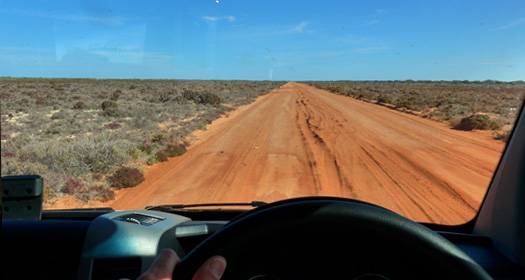
|
April 10, 2017 (day 3,602)
Quick Fix: New Beach, Western Australia

Living in a Camper Van
Living on a sail boat and living in a camper van in Australia's expansive outback are not so very different. You need to provision thoroughly, you need to be comfortable in small bathroom spaces, you need to have a generous sense of humor and you need to stow everything securely before taking off, especially if you plan to go round any corners. The going round corners lesson happened quite early on when the microwave proved to be the wrong place to store china plates whilst navigating a bend in the road. A rookie mistake I'll admit, but I'm used to unbreakable flatware on the boat, so china is likely to have an uncertain future in my world, but so far only one plate has bitten the dust, so we're doing pretty well really. We are well into the roadtrip now and we've tried the van in most conditions from beach front to national park to wild and woolly forest and the van has performed brilliantly, and we are having the best time ever! - CH |
|

|
 |

|

| April 7, 2017 | Looking west across the Indian Ocean. |
|
| |

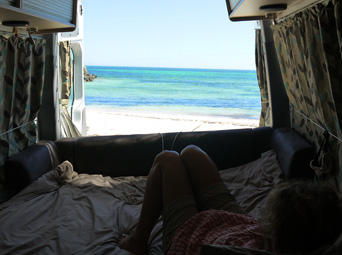
|
|
|
 |
Day 3,599 - Western Australia
19:49hrs - April 7, 2017
A Buzz Worthy Campsite |

While planning our road trip to Darwin I hoped we'd find the perfect campsite, imagining a remote location on an idyllic stretch of coastline where we'd back the van onto a golden beach, and with the Indian Ocean lapping at our rear wheels, enjoy a sea breeze, the sound of surf, a panoramic sunset view, and a crackling driftwood beach fire under a quiet canopy of stars. Well, we found it!
Just off the Indian Ocean Drive, a road that parallels much of the south western coastline, we pulled off to explore a gravel track only to discover our secluded sunset beach, complete with gentle lapping waves and driftwood. Regrettably, however, what we also discovered just seconds after opening the camper doors to stretch our legs, were plague proportions of flies and bees, thousands of them that had us doing bush waves while pirouetting wildly around the van like a couple of drunken ballerinas.
Australian bush flies are ubiquitous and relentless. They're big ugly black things that have no qualms about flying directly up your nose, and no amount of swatting, waving or cursing will ever stop them. And the bees, well, we're not entirely sure why they were there in such numbers, but we did later discover that we'd set up camp just outside the Beekeepers Nature Reserve.
But thankfully we arrived prepared as our first pitstop after collecting the van in Perth was Bunnings, the Home Depot of Australia, where we purchased 10 square meters of fly screens and three rolls of industrial grade duct tape. It was the best investment we could have made, and after a few hours of home improvements, we had our rig sealed-up better than a Red Cross tent during a dengue outbreak.
Our idyllic beach stop was our first chance to really test the rig for weakness, and even though a few flies and bees managed to breach our fortress of solitude (due to an overlooked and un-screened vent in the head) we eventually had our screened doors wide open, a perfect ocean view, and a cool sea breeze blowing through our little home on the sand.
Two local fisherman had informed us earlier that the bees were simply searching for fresh water, so putting this theory to the test, and to bait them away from our van, we set out a bowl of water and miraculously, within minutes, thousands of bees were drinking, swimming and bathing in our little Pyrex oasis. Regrettably, we had failed to realize that the bees would alert all their relatives in the region and that eventually every bee from the entire reserve would swarm to our bowl, which I had placed, in hindsight, perhaps a little too close to the van.
We were determined to relax and enjoy our secluded beach spot, so Plan B was initiated involving a mixture of Dettol and baby oil (which an Aussie mate assured us would repel flies, bees and anything with a sense of smell - thanks Nico, works like a charm!) and a mountainous fire to smoke away the swarms. After an hour of smudging the beach and squirting generous proportions of Dettol and baby oil around the vans perimeter, we eventually found our serenity.
At dusk the remaining flies and bees in the area admitted defeat and took their leave, and for the rest of the evening and into the night we relaxed in the warm glow of our beach fire with the Indian Ocean as the backdrop. It was absolutely magnificent. That is until around 1100 PM when I noticed a Wolf spider crawling slowly up my arm. Its fanged bite is only mildly venomous, apparently, yet books on the subject promise that it will be quite painful, so at that point we decided it was best to turn in. |

|

| April 6, 2017 | Did we take a wrong turn? |
|

|
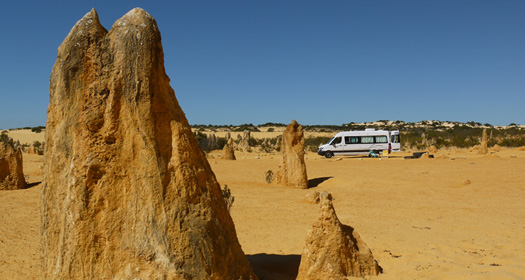
|
April 4, 2017 (day 3,596)
Quick Fix: The Pinnacles, Western Australia

Camping in a 500,0O0 Year Old Forest
It seems geologists can't quite agree on exactly how they were formed, whether they're calcified roots from an ancient forest, or even the trees themselves, but most agree that they're old, about 500,000 years old, and that they're pretty darn cool. The Pinnacle Desert stands in the Nambung National Park, and for the very reasonable fee of just $12, is open to tourists to wander day or night, and even though a park official gently suggested that perhaps our 2WD van might be too long and ungainly to enter the sandy desert, we've toured the park for two days without getting wedged between pinnacles or bogged in sand. We set up camp down a dead end track that, with no signs, most tourists seemed reluctant to enter, and not having to rush out to find lunch, or a bed, we enjoyed an extra long visit, relaxing until long after most tourists left in search of a hotel, we even pulled out the BBQ. Just before dusk we sighted two wild emus trotting amongst the pinnacles - magical. |
|

|
 |

|

| April 3, 2017 | Another day with the Pinnacles in Western Australia. |
|

| April 2, 2017 | The Pinnacles Desert, Nambung National Park - our first campsite in the new van. |
|
|
| |
|

 |
|

